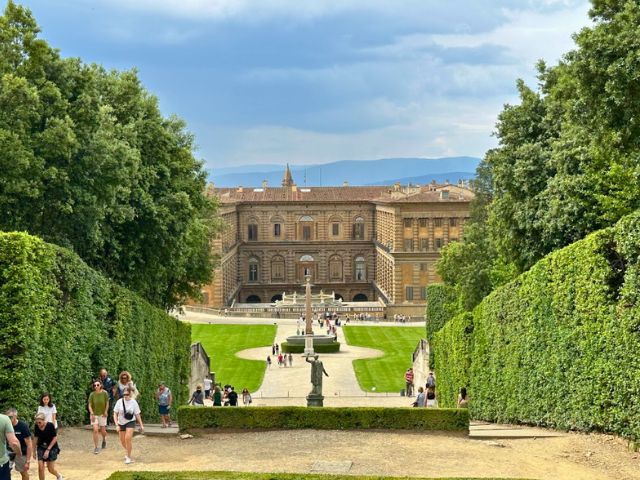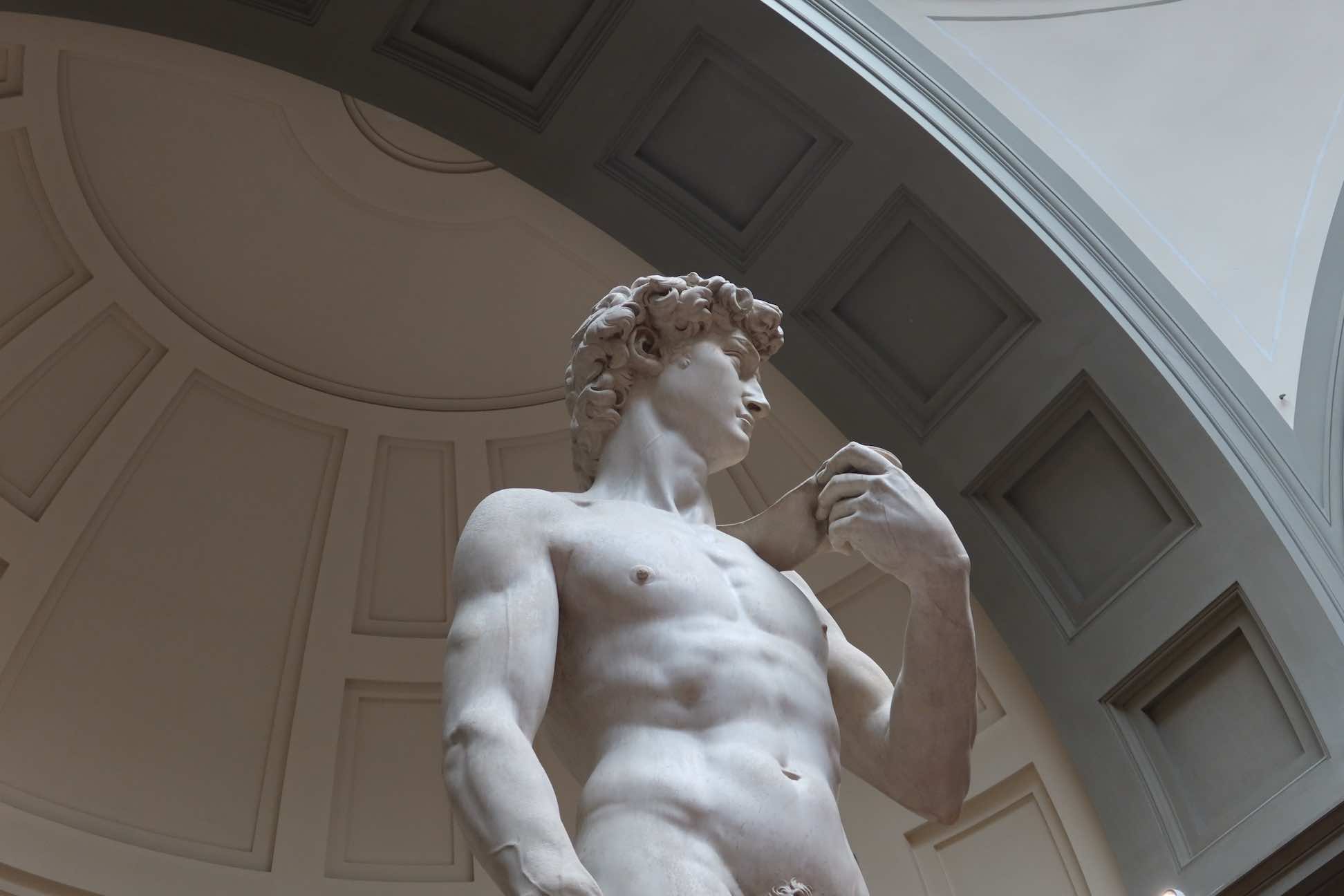- Sign up & get a FREE ebook Subscribe Today! Our New Italy Travel Website Is Here Visit Napleswise Now!
- Florencewise Home Page
- What to do in florence
- Boboli gardens
The Best Way to Visit the Boboli Gardens Florence
The Boboli Gardens constitutes an important piece in the mosaic of Renaissance art that has given Florence its world fame.
A visit to the Boboli Gardens is a must if you want to be able to say that you have truly visited the Tuscan capital, so keep reading for more details!
Visiting the Boboli Gardens - Everything You Need to Know
Behind the impressive Pitti Palace, just across the Arno River from the historical city center in the Oltrarno quarter of Florence, the Boboli Gardens offer a tranquil escape from the bustling city.
Like an outdoor museum, the park of great historical importance stretches out from Palazzo Pitti to the Porta Romana.
The Boboli Gardens will treat you to statues, fountains, secret paths, water basins and fantastic panorama views.
A stroll through these gardens is a must if you want to get the Tuscan capital's charm under your skin.
On this page we'll be exploring:
- The history of the Boboli Gardens
- The architecture of the Boboli Gardens
- Some of the special things to see in the Boboli Gardens
- The best way to visit the Boboli Gardens
- Practical information for visiting the Boboli Gardens Florence
The Boboli Gardens History
Established in the 16th century, but with roots going back much longer, the Boboli Gardens are a masterpiece of Italian Renaissance design.
Evolving from a royal retreat to a beloved public park, this historic oasis with its centuries of transformation and ongoing artistic influence remains an iconic landmark in Florence's cultural landscape.
A walk in history
The Boboli garden name derives from the Borgolo family who originally owned a vast swathe of land on this side of the river.
In 1418 this land was bought by banker Luca Pitti, who later built the impressive Pitti Palace, whose construction was completed in 1458.
A century later in 1549 the Pitti Palace and surrounding land was bought by Cosimo I de' Medici for his wife Eleonora di Toledo.
To date the Medici family had been living in Palazzo Vecchio, but Cosimo found it too small and wanted somewhere more grand to house his family.
The Pitti family could no longer afford to keep up with the running costs of the huge Pitti Palace so when the family of grand dukes stepped in, this was an easy sale!
Soon after their purchase, Eleonora started an ambitious project to embellish and extend the gardens around the Pitti Palace, including a large area that up until then had been used for agricultural purposes.
The project was given to Niccolò Pericoli, called il Tribolo, a landscape architect who had already been in charge of several successful garden projects in and around Florence, including the magnificent Florentine Villa Medicea.
Renaissance gardens
During the Renaissance it was fashionable among wealthy families, and also a habit of many European courts, to build luxurious gardens.
Very often a difference in the terrain levels made it possible to create a visual link between different parts of the garden, the surrounding landscape and the architecture within it.
True to fashion, il Tribolo's project was very ambitious.
His green architecture plans included an amphitheatre, a large avenue, numerous statues, large grotto, secret paths, terraces, several panoramic viewpoints towards the centre of Florence, elegant fountains, water streams and basins of different sizes all surrounded by luxuriant vegetation.
Sadly he died before he could see his designs realized, but those designs were faithfully implemented.
Later extensions
The space taken up by the Boboli garden was extended in the seventeenth century to their current size.
Additions like the Kaffeehaus, Giardino del Cavaliere and the Lemon House, constructed by Zanobi del Rosso between 1777 and 1778, stands as a testament to the artistry of this era.
Today the Boboli Gardens cover an area of about 45,000 square meters.
In a time-lapse of several centuries, Tribolo's project has earned itself a place in the history books as "one of the best and most famous examples of the classical Italian garden".
The Architecture of the Boboli Gardens
The Boboli Gardens offer a captivating blend of art, nature, and history.
Be ready to explore an array of enchanting features, including majestic statues, serene fountains, hidden pathways, ornate water basins, and breathtaking panoramic views, all set amidst lush, meticulously landscaped greenery.
The garden is laid out along two main axis, the original one stretches from the back of the Palazzo Pitti, through the amphitheater built into the Boboli hill and then up to the Fountain of Neptune and the Knight's garden.
The other one goes at a right angle, along the Cypress lane to the Fountain of the Ocean and beyond to the Piazzale di Porta Romana entrance.
Due to the way the garden was added to and expanded over the years, it has become a real open air museum!
Special Things to see in the Boboli Gardens
You might easily be able to wander around in the Boboli Gardens for a whole day.
Just let yourself drift along the many paths and make sure not to skip these gems:
Amphitheater and Ancient Egyptian Obelisk
Once you are inside the garden, you'll be greeted by il Tribolo's magnificent amphitheater and the great obelisk from Luxor which been in its present position since 1790.
 This is an ancient Egyptian obelisk, first brought to Rome during the ancient Roman empire and then later moved to Florence
This is an ancient Egyptian obelisk, first brought to Rome during the ancient Roman empire and then later moved to FlorenceIt was used to hold parades and parties for the Florentine elite and today is still used as a stage for classical concerts during summertime.
The amphitheater is surrounded by 24 niches, each of them holding ancient statues based on Roman myths.
Buontalenti Grotto
In the 16th century, Grand Duke Ferdinando I commissioned what we might call a predecessor of the man cave.
Renowned architect Bernardo Buontalenti designed an impressive and elaborate artificial cave, made to look like a natural grotto.
Featuring intricate stalactite-like decorations, sculptures, and an array of naturalistic and mythological scenes, the Grotta Grande is a fascinating subterranean attraction in the gardens, blending art and nature.
The famous Bathing Venus by Giambologna and the fountain on which it stands was added later, but dates from the same period.
Fountain of Neptune
Neptune rules over the hill above the amphitheater, his trident playfully nicknamed the "fork" by Florentines.
Sculpted by Stoldo Lorenzi in 1565 for Duke Cosimo I de' Medici, the fountain was relocated here in the 18th century, when this area was revamped to create the Basin of Neptune, a reservoir designed to collect garden irrigation water.
Kaffeehaus
One of the garden's few buildings is the charming rococo-style coffee house which carries the German name Kaffeehaus.
It was built in 1766 according to the fashion among the European courts and aristocrats of enjoying their coffee in specially created buildings.
Take a look at these pages to find out how to make the most of your time in Florence:
Viottolone
Have a stroll down the wide tree-lined alley, called il Viottolone.
As you walk down the hill you'll find rows of proud cypresses, the iconic Tuscan tree, which were planted in 1612.
Along il Vittolone you'll find several classical and Renaissance statues, citrus gardens and the famous passage, Cerchiata grande, where an infinity of holm oaks on both sides of the alley creates a rooftop, which gives you the feeling of walking inside a gallery.
These old oak trees were planted between 1612 and 1614.
Isolotto
Strolling along il Vittolone you'll end up at one of the garden's most beloved spots, la Vasca dell'Isola.
This is a small island surrounded by marble statues and with two fountains in the center, including the huge Fontana dell'Oceano made by Giambologna in 1576.
No matter what season you visit Florence, here are 4 things never to leave at home:
Disclosure: If you make a purchase through a link on this page, I may receive a small commission - at no extra cost to you. Thank you for supporting my site!
Fontana del Bacchino
Crafted in 1560 by Valerio Cioli, this remarkable statue showcases a figure resembling Nano Morgante, the court dwarf from the time of Cosimo I de' Medici.
This whimsical figure is fashioned after Bacchus and is depicted riding a tortoise.
In the year 1572 this intriguing sculpture was ingeniously transformed into a functional fountain, adding an extra layer of charm to this element of the historical park.
Views of Florence
On the hill behind the amphitheater, the Forte Belvedere rules.
Erected in the period from 1590 to 1595, this is the highest point of the garden.
Therefore it offers, together with the famous Piazzale Michelangelo, one of Florence's most charming panoramic views, which throughout time has attracted thousands of artists in search of natural beauty.
The Best Way to Visit the Boboli Gardens
In spring the gardens come alive with blooming flowers and lush greenery, creating a colorful and vibrant atmosphere.
Fall is another excellent time to visit, especially if you prefer milder weather and fewer crowds.
The gardens take on beautiful fall colors as the leaves change, offering a serene and romantic atmosphere.
But to me every season has its own charm, and the gardens are open year-round.
If you are visiting the gardens by themselves, you don't have to go in through the entrance at the Piazza Pitti, there are three other entrances/exits which all have ticket offices:
- The Forte Belvedere up on the hill near the Bardini gardens
- The Annalena entrance located near the Lemon House
- The Porta Romana, which marks the medieval city wall
If you would like to see a particular feature of the garden and its open air museum, it's worth checking in advance if there are any temporary closures that could impact your visit.
Renovations and restorations are always ongoing, the Porcelain museum is currently closed until further notice for refurbishment for example.
Practical Information for Visiting the Boboli Gardens
Boboli Gardens Opening Hours
The Boboli Gardens open daily at 8:15AM, but the closing time changes depending on the time of year.
From November to February, the gardens close at 4:30PM.
In March and October, you can enjoy them until 5:30PM either side of the clocks changing for Daylight Savings Time, and then 6:30PM once the clocks change March through to October.
From June to August, they extend the closing time a little further to 7:10PM.
Last admission is always an hour before the current closing time.
The Boboli Gardens are closed on the first and last Monday of each month, as well as on January 1 and December 25.
🔐 Store your bags and luggage securely! 🧳
We're parterned with Radical Storage who have locations across Italy for you to keep your luggage safe before and after check-in, while on day trips and for everything else between 👌
Click here to book now and use code FLORENCEWISE to save 5%!
How to get to the Boboli Gardens
The most convenient and scenic way to reach the Boboli Gardens is on foot.
If you're in the historic center of Florence near the Duomo, Uffizi Gallery or Accademia Gallery you can walk to the gardens in approximately 15 minutes.
Head south across the Ponte Vecchio and continue walking south along Via Guicciardini.
You'll eventually reach the entrance to the Boboli Gardens at the Palazzo Pitti, or you can use the other entrances noted above.
Entrance Tickets for the Boboli Gardens
You can purchase your entrance tickets in person at the ticket offices during the garden opening hours, but I strongly advise you to purchase them in advance online.
The lines can be long at busy times of year and it is just easier to skip those altogether if you can!
 I highly recommend getting the combo ticket for the Pitti Palace and Boboli Gardens to get the full experience
I highly recommend getting the combo ticket for the Pitti Palace and Boboli Gardens to get the full experienceYou have a few different ticket options to choose from:
- Single ticket to the Boboli Gardens only (11€ per adult)
- Combo ticket for the Boboli Gardens and Pitti Palace (23€ per adult)
- The PassePartout ticket, which is valid for 5 days and gives you access to the Boboli Gardens, Palazzo Pitti, Uffizi gallery and National Archeological museum. You get one entrance to each site during the 5 day period, with priority entrance. (39€ per adult)
- Annual passes, either for just the Boboli gardens (26€ per adult) or the PassePartout sites (71€ per adult or 101€ for a family)
To plan your visit and verify the latest ticket prices and availability, it's advisable to check the official website.
Receive the latest Florence news, travel tips, insights and more!
Simply sign-up today for our free newsletter:
We are committed to respecting your data. Click for our Privacy Policy.
Comments? Questions? Suggestions?
Please come over to the private Facebook group and join in the conversation.
You will often find me there, happy to answer your questions / comments!
You will also meet other Florence lovers and experts, too.
What are you waiting for?





























